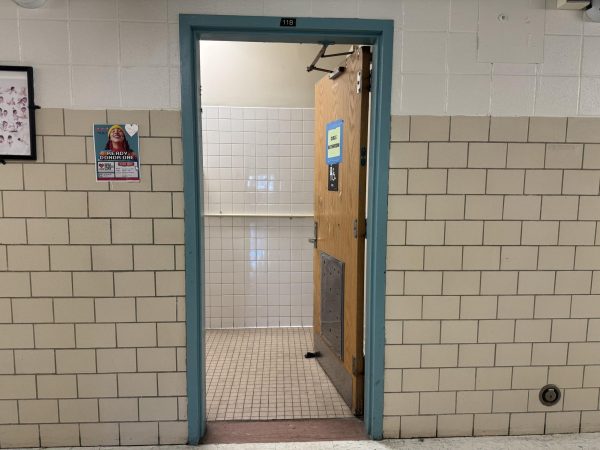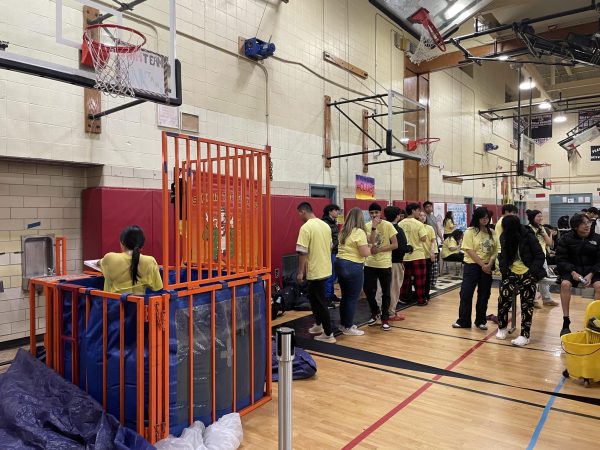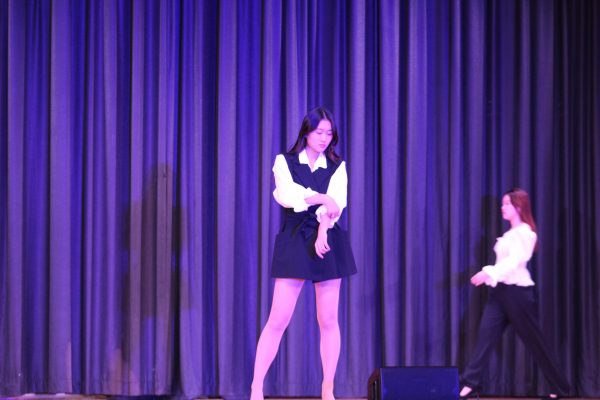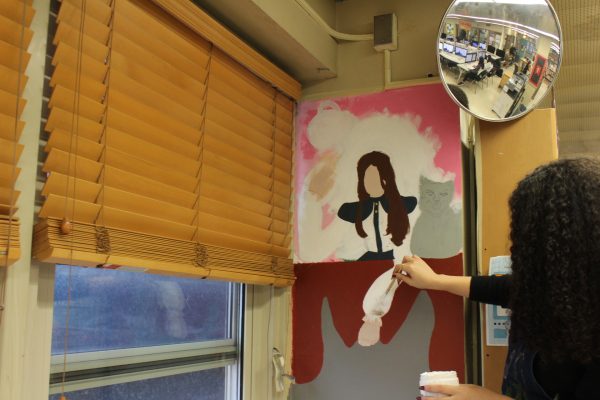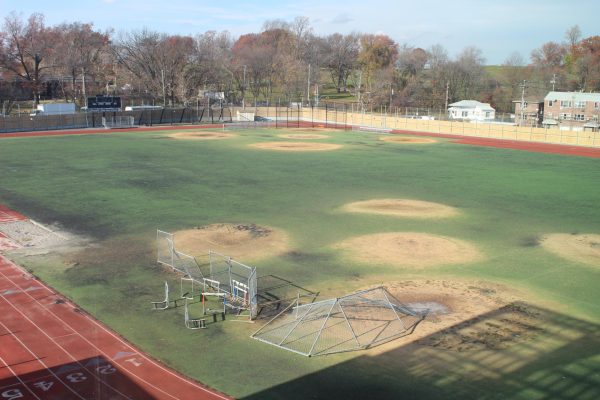Francis Lewis Sows Seeds of Innovation through Hydroponics
The steady pitter-patter of water reverberates through the still afternoon air, accompanied by a faint rustling of leaves as students maneuver themselves around greenery. Plants are lined up all around you— like a hedge maze — as if you’re on some sort of adventure out in nature. In reality, you’re at the school’s greenhouse, the heart of Francis Lewis’ hydroponics program.
With sunlight pouring into the glass structure, mountains of green prosper and living creatures thrive. From tiny ladybugs and water droplets to substantial hydroponic systems, the annex greenhouse is another world compared to the traditional rows of desks.
The hydroponics program at Francis Lewis originated as a club, but, with the introduction of the annex, it has blossomed into so much more.
“The students loved working with it and the teachers loved it so they got trained,” the AP of Science and Culinary Ms. Jaipershad said. “Eventually when we were building the annex we wanted to do a rooftop greenhouse that was fully equipped with hydroponics.”
Before its industrious system was complete, the greenhouse had very humble beginnings.
“As far as my expectations go, yeah, we’re getting there,” Hydroponics teacher and greenhouse manager Mr. Schwartz said. “I mean we didn’t have a floor or a ceiling. We set these things up, and we didn’t wait for the outside contractors. We set it up and made it happen.”
Despite the greenhouse’s initial state housing an improper environment for plant growth, its first impressions were nothing short of positive for students.
“It was in the middle of September, so it was very bright out and very punchy because it’s all glass ceilings, glass walls, and it was really bright and active,” senior Manpreet Kaur said.
Sophomore Xinxu Li plans “on staying in the program until I graduate.”
“My goal is to hopefully understand which plants are which species and looking at the plant and understand what they are, eventually seeing the animals grow and looking at the progress when I come back after high school,” Li said.
The greenhouse is an essential rope in the intricate knot of Francis Lewis. Kaur, a student in both Science Research and Hydroponics, agrees.
“For me, personally, it crosses paths perfectly,” Kaur said. “My research experiments for the past three years have been about hydroponics and growing plants. I learned how to do hydroponics and learned even more while in this program. It got to help me out with my research and do something that I love.”
Despite Hydroponics being a class, its students say it’s anything but. According to Kaur, it’s “somewhere I can grow and take care of things.” Freshman Rebekah Yook agrees.
“It’s more hands-on,” Yook said. “You’re not sitting down just writing everything down. It’s more like you get to walk around and have freedom. You get to take care of things and talk to people while doing it. It’s engaging.”
Ms. Jaipershad elaborates on the benefits of a class like this.
“It’s also therapeutic because you’re around plants and you’re working with your hands,” Ms. Jaipershad said. “And if you’re stressed out, that’s a great way to relieve stress. “It is a very unique program and no other school in Queens has a rooftop greenhouse.”
One characteristic that truly differentiates the greenhouse from other classrooms are the lively creatures in it. Past the green heads of lettuce are turtles, lizards, and other life.
“I started bringing in animals because they’re vegetarian,” Mr. Schwartz said. “Kids, students, and people always like animals. I want to show them that we can breed them, I think that could be a fun thing. The animals are a personal thing I like, and people like looking at animals more than plants.”
The animals’ diets are a cost effective way to sustain life in the greenhouse. The greenhouse, through teamwork and communication, supports the thriving life of organisms from chlorophyll to lizard scales.
“My classes just make it happen,” Mr. Schwartz said.
Mr. Schwartz believes that the program teaches students valuable life skills that can stay with them after the graduate.
“They’ll see how long it takes to grow the vegetables they eat, and hopefully won’t waste it,” Mr. Schwartz said. “If it takes two months to grow a head of a lettuce, and you throw it out after a day, you eat half of it.”
“I think young people especially have to realize everything isn’t immediate,” Mr. Schwartz added. “We think ‘oh I can get lettuce, we can just go to the store,’ but it had to be grown. It had to take water, had to have sunlight, and you have to take care of it.”





